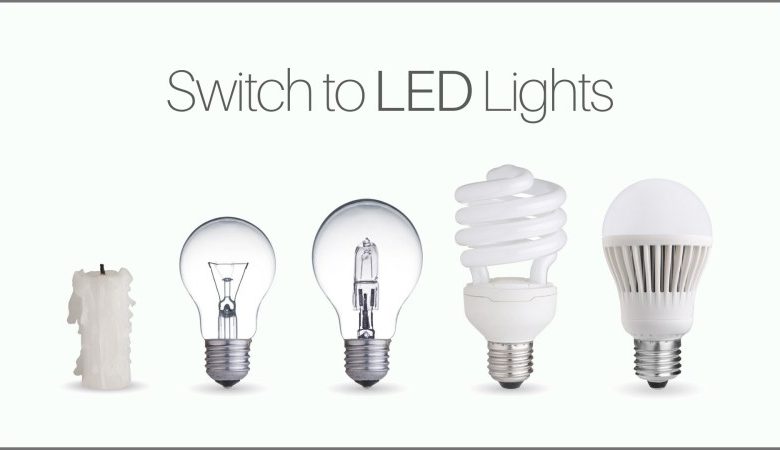5 Mistakes to Avoid When Switching to LED Lighting

In recent years, LED lighting has become a popular alternative of conventional lighting solutions, as its highly marketed feature of 75% less energy consumption compared to halogen light bulbs is widely supported by the industry. Another striking feature is that the functional life-cycle of an LED bulb is 5-10 times longer than halogen ones. In addition to this, there are some proven health benefits of using LED lighting systems. Overall, LED lighting is more energy efficient and long lasting when compared to any other lighting technology.
We all know that LED lights operate differently, but there are few things that you need to take into consideration before you decide to upgrade. Avoiding these common mistakes will ensure that you are getting the most out of your LED lighting products.
Consider the below mentioned 5 Mistakes when switching to LED Lighting
-
The Light Distribution Is Different
The difference in light distribution can be either a blessing or a curse, and it completely depends on your application. LED lights are very directional due to their diode’s arrangement. Hence, specifications such as beam angle and light distribution type have to be taken into consideration.
If you are replacing an A-shape incandescent bulb with LED lighting, you might lose some downward light. So, make sure that you are replacing it with A-shape LED Consumer LED lights since they are omnidirectional.
When it comes to HID bulbs, they are usually omnidirectional. In fact, most of the light emitted is lost inside the fixture.
The LED lighting is designed in such a way that all the light is emitted outwards to where it is actually needed. Even though the Lumen rating of similar fixtures might appear different on paper, the LED fixture will still provide a similar bright light.
-
Lights Are Too Bright or Too Dark
When looking for your LED upgrade, make sure to compare the Lumens of your current bulb with the new LED replacement. Comparing the wattage to the LED’s wattage equivalent is a good start, but comparing the Lumen output as well will give you a better understanding of how bright an LED light bulb or fixture will be. This method works for most lights with one major exception being upgrading HID fixtures. As stated above, since LEDs are directional and HIDs are omnidirectional, this is one instance where the wattage equivalent rating will help much more than the Lumen rating.
-
The Colour Appearance
When upgrading to LED lighting technology, make sure that you are comparing the Lumens of your current bulbs with the new LED lights. Initially, you can begin by comparing the wattage to the LED wattage equivalent. However, comparing Lumen output will provide you with a better understanding of how bright the LED lights will be.
On the other hand, the colour appearance of the emitted light is measured in Kelvin. In case you want to match the colour appearance of your existing lighting system with the LED lighting system, note the LED Kelvin colour temperature.
Usually, the fluorescent tubes have the colour temperature printed on the side of the tube. Thus, it makes matching the LED tube light replacements easy. However, incandescent and halogen bulbs do not have any mention of their Kelvin colour. But know that most to all incandescent bulbs are around 2400K to 2700K; whereas the halogen bulbs are around 3000K to 3200K.
Buying LED lighting within the same range will help you keep a similar appearance.
-
LEDs with an Incompatible Dimmer
Remember that not all dimmers are made equally. In other words, not all dimmer switches will work well with LED lighting systems. For instance, if you install LED lights on a circuit with a standard incandescent dimmer, you will often observe flickering, buzzing, humming or flashing of the light.
So, while installing an LED light system, make sure that you are also using compatible LED dimmer switches. Each dimmable LED light comes with dimmer compatibility. Make sure that you are using a compatible dimmer to obtain the best results from your LED lighting products.
-
Lights Make Colours Look Dull
The colour rendering index, or CRI, of a light indicates how accurately it displays colour compared to the midday sun. The higher the CRI rating, the more accurate the colour. Some applications need a high CRI rating, such as art installations, retail displays, jewellery counters, and museums. Incandescent and halogens bulbs have a CRI of 100, and while LEDs can’t quite match that, they can be found with a CRI in the 90s which is still considered excellent. If you replace your incandescent or halogens with an LED with an average CRI rating, you may notice colours appear a little lacklustre. Although the average person may not notice the difference enough for it to be needed in general lighting settings.
Conclusion
Advantages of upgrading to LEDs cannot be overstated. Not only do they save money for you but they also have a much beneficial impact on the environment. So, if you have already decided to do so, you are not only being smart but also a responsible citizen of your community and country. Enjoy all the energy saving benefits of LED lighting provided you remember to avoid and consider these common mistakes. If you need help with your LED upgrade, always remember to consult an expert lighting company in your area.
For more informative article keep visiting The Post City.


